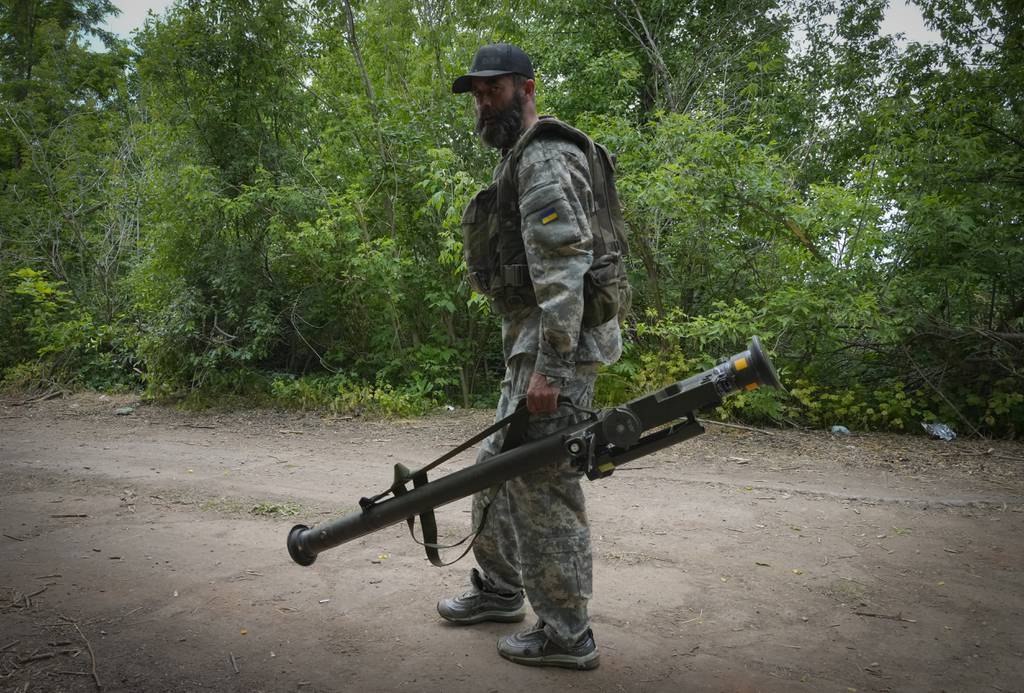Autoridades rusas vienen advirtiendo acerca de la posibilidad que Ucrania utilice una “bomba sucia”, en la zona anexionada luego de la invasión de Rusia. Por su parte, las autoridades de EUA y los países que han proporcionado enorme cantidad de equipamiento militar a Ucrania, especialmente sistemas letales de última generación, muestran preocupación que parte de ese material crítico (Por razones delictivas, capturados en operaciones, contrabando, etc), termine en manos rusas o en terceros paises. El mismo puede ser utilizado para instrumentar una acción de “falsa bandera” o bien ser sometido a ingeniería inversa, tanto para conocer más sobre las tecnologías que los integran, como para instrumentar contramedidas específicas. Sistemas de bajo costo relativo como los misiles Atan JAVELIN o los Stinger (Shorad), que han tenido una gran relevancia en este conflicto, son exhaustivamente controlados por asesores de los países que los proveen. Una tarea exytremadamente dificultosa en tiempos de guerra.
WASHINGTON ― The U.S. State Department released plans Thursday to better track weapons supplied to Ukraine, voicing fears Russian forces could capture and use them to fabricate an attack by Ukrainian forces.
“Pro-Russian forces’ capture of Ukrainian weapons ― including donated materiel ― has been the main vector of diversion so far and could result in onward transfers,” the plan reads. “Russia probably will also use these weapons to develop countermeasures, propaganda, or to conduct false-flag operations.”
The warning comes amid Russia’s unfounded claims Ukraine is planning to use a “dirty bomb” on its own soil, which U.S. officials see as a potential pretext for Moscow to escalate the war. Ukrainian President Volodymyr Zelenskyy has also accused Russia of planning to blow up a huge dam near Kherson and blame it on Ukrainians.
Since Russia launched its war in Ukraine eight months ago, the U.S. has been speeding more than $17 billion in military aid, from shoulder-fired rockets, howitzers and armored vehicles to advanced air defense systems. U.S. lawmakers and officials in Europe, which is also providing billions in weapons, have in recent weeks stepped up calls for stiffer oversight.
The State Department is especially concerned about two classes of weapons: man-portable air defense systems, including the thousands of Stinger anti-aircraft missiles sent by the U.S., and anti-tank/all-purpose tactical guided missiles, including thousands of Javelins the U.S. sent.
The State Department said, as part of the plan, it is working with Kyiv to clear explosive remnants of the war, an activity that would enable “on-the-ground accounting for and securing of weapons,” the plan says.
“As in any conflict, we remain vigilant to the possibility that criminal and non-state actors may attempt to illicitly acquire weapons from sources in Ukraine, including members of the Russian military, during or following the conflict,” State Department spokesperson Ned Price said in a statement.
The one-page plan released Thursday offered a number of actions, some for next year, others for 2024 and beyond — but few details about how they would be implemented.
Among other steps in the plan, U.S. embassy personnel in Kyiv would help Ukraine increase weapons tracking. Beyond that, the State Department plans to bolster training for Ukrainian forces on protecting their borders and destroying found weapons and ammunition to deny them to non-state actors and protect civilians.
In the future, the U.S. also wants to deploy contracted de-mining units to work alongside Kyiv’s forces and train border forces to recognize man-portable air defense systems and anti-tank weapons.
So far, Ukrainian forces have been keeping small arms and other weapons from ending up on the black market and Ukraine has committed to safeguarding weapons donated by the U.S., but the plan acknowledges “the chaotic nature of combat can make this difficult.”
Fuente: https://www.defensenews.com


